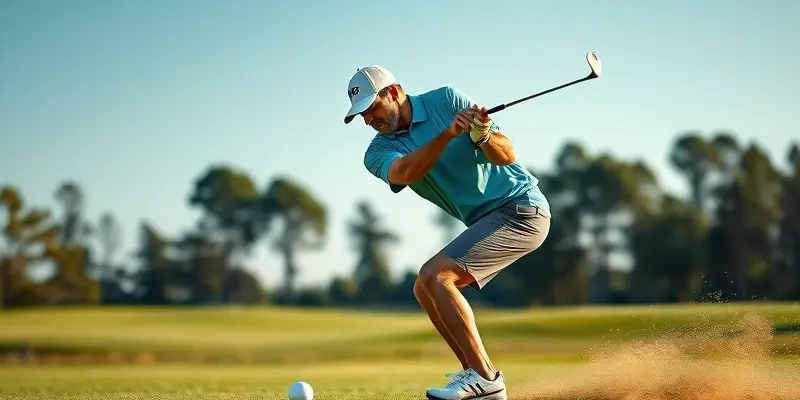Golf may look gentle on TV, but every swing packs a punch—and injuries can strike beginners and seasoned players alike. Whether you’re aiming to lower your handicap or simply keep enjoying the game for decades, smart recovery and injury prevention are game-changers. As a fitness and health expert with 10+ years guiding athletes (and as lead writer at GymPulse), I’m sharing proven, practical strategies to help you bounce back stronger and enjoy golf for a lifetime.
Understanding Common Golf Injuries and Risks
Don’t let a sore back sideline you! The most frequent golf injuries include:
- Low back pain (often joint-related)
- Golfer’s elbow (medial epicondylitis)
- Tennis elbow (lateral epicondylitis)
What’s surprising? Most of these issues stem not from single accidents, but from repetitive bad habits:
- Poor swing mechanics
- Improper grip pressure
- Imbalanced training or sudden practice increases
Golf’s beauty is subtlety—the tiniest movement flaw can build up over time. That’s why biomechanics and progression are critical, whether you’re working on your first drive or chasing single digits.
Prevention: Setting Up for Success
Start with a Dynamic Warm-Up
Static stretching before a round is out; dynamic movement is in! Think arm circles, torso twists, lunges with rotation, and band pull-aparts. Dynamic warm-ups get your blood flowing, prep your joints, and activate key golf muscles—think of it as tuning up your engine before a road trip.
Nail Your Biomechanics and Equipment
- Grip and posture: Keep your grip firm but relaxed. Your posture should feel athletic—weight balanced, knees soft, chest proud.
- Focus on a smooth tempo: Fast, jerky swings don’t just spray shots; they raise injury risk.
- Equipment check: Make sure clubs fit your height and strength. Too-heavy or long clubs strain wrists and elbows, especially for youth and beginners.
Nourish and Hydrate Like a Pro
Imagine your body as a high-performance car: it runs best with the right fuel. Hydrate before, during, and after your round. Opt for balanced meals with protein (for muscle repair), carbs (for energy), and anti-inflammatory foods like berries, greens, and omega-3-rich fish. For more on injury prevention nutrition, check out our guide on antioxidants in sports nutrition.
Smart Tools and Gadgets to Protect Yourself
- Push carts beat carrying bags for your back and shoulders—especially during tournaments or marathon range sessions.
- Supportive shoes mean better stability (and fewer twisted ankles).
- Specialty grips and compression sleeves can ease strain on hands and elbows.
Recovery: Evidence-Based Approaches
Immediate Response: Don’t Ignore Pain
If you tweak something, resist the urge to “play through it.” Early evaluation by a pro (physical therapist or sports physician) is key—pain often hides the true cause.
The Three Rs: Rest, Rehab, and Return
Rest: Take a break, but don’t become inactive. Gentle mobility work—like dynamic shoulder circles or hip swings—keeps blood flowing.
Rehab: Start strength training as soon as symptoms ease. Focus on correcting imbalances with exercises like:
- Band pull-aparts for shoulders
- Bird-dogs for core stability
- Gentle wrist curls for elbow issues
Return: Build up slowly. Don’t rush back to full swings; start with chipping, then half swings, and only crank it up once you’re pain-free and strong.
For a step-by-step approach, see our injury recovery checklist.
Recovery Gadgets: Use Wisely
Tools like foam rollers, massage balls, and resistance bands are excellent for home recovery. When in doubt, check with your coach or rehab specialist for what fits your injury and stage of healing.
Mindset: The Hidden Key to a Great Comeback
Set Short-Term Goals
Recovering from injury isn’t all-or-nothing. Track small wins (e.g., “Today I can swing pain-free with a wedge”). Celebrate progress!
Mental Practice and Staying Motivated
Visualization techniques, mindfulness breathing, and mental rehearsal can boost confidence and lower stress—both on the course and in recovery. Learn more about visualization for healing to enhance your comeback.
Stay Social, Stay Connected
Don’t isolate yourself. Attend events, practice putting, or volunteer at tournaments during breaks. The golf community is a powerful motivator.
Key Takeaways: Your Injury-Proof Golf Checklist
| Factor | Prevention Tips | Recovery Tips ||————————–|——————————————|————————————–|| Swing/Equipment | Perfect grip, custom clubs, smooth tempo | Modify swing, adapt tools || Warm-Up | Dynamic movements | Gentle mobility, clear milestones || Fitness | Strength, flexibility, balance training | Address imbalances, progress slowly || Nutrition/Hydration | Stay fueled and hydrated | Protein/omega-3 focus || Gear | Shoes, push carts, specialty grips | Use compression/support as needed || Mindset | Set intentions, visualize success | Track wins, remain socially active |
Ready to take your golf game and wellness to the next level? Gympulse Club’s experts are here to help with custom plans, injury prevention seminars, and a supportive community. Check out our resource hub or reach out for a personalized recovery roadmap. Swing smarter, stay healthy, and enjoy more years on the fairway!

